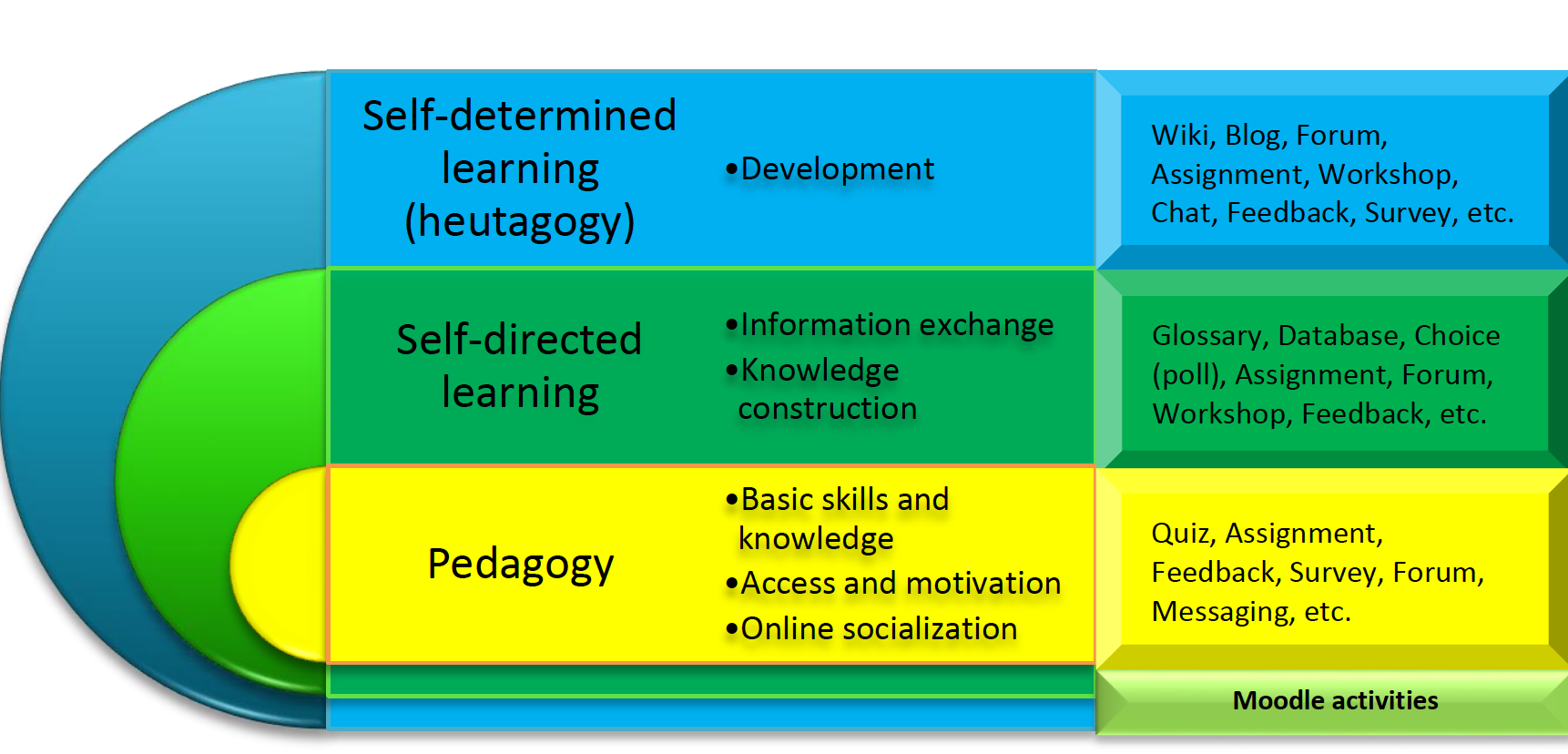Reflections and self-assessments
The quality of e-learning is also related to the assessment procedures and criteria. Learners need to be aware of the criteria and to use self-assessment as a means of mastering the learning process themselves. Planning, organizing content and the steps of learning are highly bound to the students’ needs. Assessment lies at the heart of autonomous and flexible learning, since it can help students become more aware and tailor their training to suit their personal needs.
Mandala is a graphic depiction which aims to increase the learners’ control, satisfaction and, ultimately, motivation, Image 5. It enables self-assessment to take place at a regular pace throughout a course, as a formative assessment, to provide “just-in-time feedback” as well as at the end of the course in the form of summative assessment.

The above graph enables learners to track their development in terms of knowledge, skills and attitudes. Learners can colour the section that corresponds to their achievement in the three parameters (knowledge, skills, attitudes), and go back again and again assessing and colouring the full graph at stages. The success of the above process is very much depending on the clarity of the learning targets and the criteria which learners strive to accomplish.
There is a variety of activities that educators can pick and mix to match both individual and collaborative tasks. This means that students can either work in groups (e-tivities) or all alone (activities). Activities can also be open-ended or close-ended which, again, helps educators design a lesson according to the target. That said, we can classify the different activities and resources of Moodle according to the three stages aiming at self-determined learning. Close-ended and individual activities, for example can be handier at the stage of pedagogy and open-ended, collaborative activities can become a preference for heutagogy,
